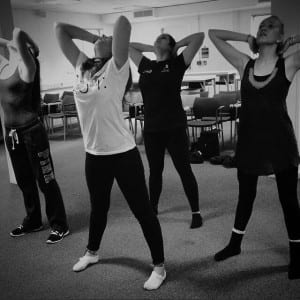This week’s rehearsals have established the relevance and significance of Sound in our piece When You See It. We had our first musical rehearsal where instruments were brought in by the company to create an original song and lyrics for our Selfie scene. In Sound and Music for Theatre, Deena Kaye et al describes principal responsibility of a sound designer is to “determine what sounds are essential to represent the reality you want to create” (2009, 3). Acoustic sounds are able to establish a personal space and atmosphere on stage. This idea of a personal space correlates with Refract’s manifesto by creating work which “transcend[s] from a global to a personal scale” (2015), however sound technicalities still need to be considered when transferring live music from rehearsal room to the stage.
During a meeting with Darren Page, stage manager at Lincoln Performing Arts Centre, I began to understand how technical the ‘technical stuff’ is. An area that I’m not 100% clued up on… just yet. From the meeting, stage space and appropriate microphones are all essential to getting sound ‘right’ on stage. Multiple types of microphones are purposed for different aspects of sound, such as instruments and speech but it is imperative to be mindful as to where music will be performed and if needed placed on stage. In the next few weeks, it will be my job to research varieties of microphone and essential sound equipment extensively in order to request and require such items in plenty of time, ahead of performance day/week/month… Ah!
Works Cited
Kaye, Deena, and James LeBrecht (2009) Sound And Music For The Theatre. 3rd ed. Boston: Focal Press.
Refract (2015) Refract Theatre Company Blog. [online] Available from https://refracttheatrecompany.blogs.lincoln.ac.uk/ [Accessed 10 March 2015]







